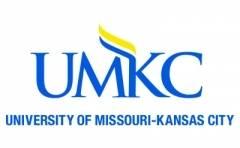Best Anesthesiologist Assistant colleges in the U.S. 2025
For those interested in a healthcare career in a growing field, anesthesiology provides excellent compensation and benefits. Projections made by the Bureau of Labor Statistics show a potential 1% job growth rate in the field.
Anesthesiologists are crucial to hospital procedures and are in charge of sedation and monitoring of a patient before, during, and after surgery. This position requires attention to detail, a calm bedside manner, and the ability to communicate with both medical experts and patients with little to no experience with medical jargon.
Becoming an anesthesiologist is a long process, and students typically need to complete a four-year bachelor's program, four years in medical school, and an additional four years of residency at a medical practice before they can work in a hospital or clinical setting. Prospective students should note that once they are licensed and practicing professionals, the salary outlook is very promising.
The demand for anesthesiologists continues to grow and there are many positions that need to be filled. While it might take longer to complete the anesthesiology track than other medical tracks like nursing or clinical psychology, this field is just as important to daily operations at hospitals and clinics nationwide.
Click Here to See the Best Colleges in the USBest Anesthesiologist Assistant colleges in the U.S. for 2025
Founded in 1836 in Atlanta, Georgia, Emory has a long and proud tradition in healthcare education. The university’s Emory Healthcare system is the largest in the state, and Emory’s School of Medicine has been training CAAs for 50 years via its rigorous didactic and clinical education curriculum. The Master of Anesthesiology program boasts a 98.36% national certifying exam overall pass rate and 99.4% job placement rate!
Case Western Reserve University’s School of Medicine has been in the game for over 175 years. It launched its first anesthesia program in 1970—the “second program of its kind in the nation!” Through various partnerships, it now offers Master of Science in Anesthesiology programs in Cleveland, Houston, Austin, and Washington D.C. Among its current and former faculty are eight Nobel laureates, six Institute of Medicine members, and two Surgeon Generals.

Fort Lauderdale’s Nova Southeastern University, aka NSU Florida, features a dynamic, CAAHEP-accredited MS in Anesthesia program utilizing “leading-edge tech” such as fully functional operating rooms with high-fidelity simulation training. The program, hosted by the College of Health Care Sciences, also provides ample 1:1 faculty mentoring—and more rotation sites than any other CAA program in the country!
Indiana University School of Medicine’s Master of Science in Anesthesia, part of its 28-month Anesthesiologist Assistant program, allows students to complete clinical rotations in a wide range of subspecialties, including “pediatrics, trauma, orthopedics, regional anesthesia, neuro, and OB.” The program is housed in the IU School of Medicine’s Indianapolis campus. Class sizes are around ~20 students and clinical rotations are mainly done in Indianapolis, but some out-of-town travel may be required.
Located in the Denver metropolis, the University of Colorado’s Anschutz Medical Campus offers a challenging Master of Science in Anesthesiology program from which 100% of graduates pass their board exams and get hired. Thanks to small cohorts of less than 16 students, the program’s faculty provide close mentorship to students as they complete clinical rotations on-site with the latest simulation lab technology. A Diversity Scholarship is available to qualified applicants, to support students who are “traditionally underrepresented in health science graduate programs.”
UMKC’s School of Medicine created its Master of Science in Anesthesia program in 2008 due to a shortage of anesthesia care providers in the state. The popular program now boasts of 100% NCCAA certifying exam pass rates and 100% job placement rates for graduates! 4 or 8-week clinical rotations are done at various hospitals and centers throughout the region, and students gain exposure to subspecialties like “obstetrics, pediatrics, trauma, neuro, and cardiovascular surgery.”
Quinnipiac University offers 1 Anesthesiologist Assistant degree programs. It's a medium sized, private not-for-profit, four-year university in a large suburb. In 2022, 4 Anesthesiologist Assistant students graduated with students earning 4 Master's degrees.
South University-West Palm Beach offers 1 Anesthesiologist Assistant degree programs. It's a very small, private for-profit, four-year university in a large suburb.
Founded in 1899, South University in Savannah, Georgia, is home to a 169-quarter-hour Master of Medical Science in Anesthesia Science program designed to “prepare competent entry-level anesthesiologist assistants in the cognitive, psychomotor, and affective learning domains who will practice in the anesthesia care team model.” Students get to apply the theoretical knowledge they learn in class during simulations within a mock operating room and learning lab. Graduates enjoy a 100% NCCAA exam pass rate and employment rate.
Ohio Dominican University offers 1 Anesthesiologist Assistant degree programs. It's a small, private not-for-profit, four-year university in a large city.
Find local colleges with Anesthesiologist Assistant majors in the U.S.
What is Anesthesiologist Assistant?
As the job title suggests, Certified Anesthesiologist Assistants (CAAs) help anesthesiologists with their duties, which include pre-operative patient evaluations and preparation, the administration of anesthesia care, monitoring vital signs during surgery, and making adjustments to anesthesia as needed. CAAs keep close watch over patients to ensure their safety and aid with post-op care related to recovery and pain management.
To become certified, Anesthesiologist Assistants must earn a medical-related bachelor’s degree plus an anesthesia-related master’s from a school accredited by the Commission on Accreditation of Allied Health Education Programs (CAAHEP). Afterward, they must take and pass the Certified Anesthesiologist Assistant (CAA) exam!
Anesthesiologist Assistant Degree Overview
Anesthesiologist Assistants typically get a bachelor’s in a medical-related field, such as nursing, medical technology, respiratory therapy, or even biology. These undergraduate degrees tend to take four years to complete, on average, if attending school full-time. Part-time students may take five-to-seven years.
Next comes the all-important anesthesiologist assistant graduate program, which incorporates a Master of Science in Anesthesia Degree. These programs include typical classes such as anatomy and pharmacology, as well as plenty of didactic courses (i.e. lectures) and clinical rotations at local healthcare settings for students to gain hands-on training. Anesthesiologist assistant programs are designed to be full-time and take ~24-28 months to finish all requirements.
Following graduation, students must next pass their Certified Anesthesiologist Assistant (CAA) exam.
Types of Anesthesiologist Assistant Classes
Certified Anesthesiologist Assistant training programs emphasize science/pre-medical courses as opposed to nursing. Curricula for these graduate programs include course topics such as:
- Airway Management
- Anesthesia Instrumentation
- Anesthesia Principles and Techniques
- ECG for Anesthesiology
- Human Anatomy
- Pathophysiology
- Patient Assessment and Monitoring
- Pharmacology for Anesthesiology
- Physiology
- Professional and Ethical Issues
- Anesthesia subspecialties, such as obstetrics, pediatrics, trauma, orthopedics, neuro, cardiac anesthesia, and regional anesthesia
- Clinical rotations to learn clinical skills and practice simulations
- Lab sessions
Skills Learned in an Anesthesiologist Assistant Degree Program
CAA’s learn how to:
- Administer various kinds of anesthesia, including general, regional, and monitored anesthesia care. This involves calculating drug dosages, selecting the right anesthetic agents, and managing induction, maintenance, and emergence
- Assess patients, including reviewing their medical histories, conducting exams, and evaluating any pre-op conditions or risks prior to creating an individualized anesthesia plan
- Manage patient airways during anesthesia via endotracheal intubation, mask ventilation, and/or supraglottic airway devices
- Monitor patients during surgery while under anesthesia, to include reading vital signs (blood pressure, heart rate, blood oxygen, etc.) and taking action as needed
- Operate and troubleshoot anesthesia equipment, i.e., delivery systems, ventilators, monitors, etc.
- Respond to emergency situations
- Work effectively as part of a larger healthcare team with surgeons, nurses, and others
- Understand pharmacology related to anesthetic agents and drug interactions
- Maintain ethical and professional standards and codes of conduct
- Stay up-to-date on new techniques, equipment, and research
These skills will help students pass their CAA credentialing exam, qualify for great jobs, and even prepare for a higher-level degree, if desired!
Anesthesiologist Assistant Degree Specializations
Anesthesia is a specialized area of medicine with several subspecialties, including:
- Acute Pain Management
- Cardiac Anesthesia
- Cardiothoracic Anesthesia
- Critical (Intensive) Care
- Hospice And Palliative Care
- Neuro-Anesthesia
- Obstetric Anesthesia
- Pediatric Anesthesia
- Regional Anesthesia
Check with the program you’re interested in to see which subspecialties they offer training in.
Bachelor's Degree in Anesthesiologist Assistant
Bachelor’s level classes will vary based on one’s major, but typical prerequisites to apply to an anesthesiologist assistant master’s program include:
- Biology (Anatomy and Physiology) with labs
- Chemistry (General, Organic, and Biochemistry) with labs
- Physics
- English
- Math (Calculus and Statistics)
- Medical Terminology
- Cell Biology
- Microbiology
Admissions requirements inevitably vary between schools, but there are some standard requirements and materials that you can expect. We spotlight some standard admission requirements for undergraduate programs below:
- High School Diploma or Equivalent: Those eligible for a bachelor's degree program must hold a high school diploma or GED.
- Official Transcripts: You'll be asked to submit official transcripts from high school or from any previously attended colleges.
- Minimum GPA: This can vary, but many schools require a GPA that hovers around 3.0. That said, some schools accept individuals with a GPA greater than 2.0.
- Application and Fees: In addition to submitting a fully-completed online application, you'll also need to pay any fees associated with the application.
- Letters of Recommendation: Some schools ask for recommendation letters. Common letter writers include employers, coaches, teachers, counselors, and faith leaders.
Personal Statement: This is a chance to set yourself apart from your fellow applicants and tell your story while discussing academic and career goals. What makes you a good candidate?
Master's Degree in Anesthesiologist Assistant
An Anesthesiologist Assistant degree is a master’s degree program. How long it will take to finish will depend on a few variables, such as:
- Which bachelor’s degree type did you get, or do you plan to get? This matters in case you may need to complete prerequisites to qualify for an Anesthesiologist Assistant master’s degree program.
- Do you have any applicable graduate credits to transfer?
- Will you attend full- or part-time? Note, Anesthesiologist Assistant training programs are full-time, but it may be possible to take a few part-time courses before applying. Each program will have its own requirements regarding transfer credits.
- Note, it’s possible some programs offer certain courses online, but we haven’t spotted them yet!
Applicants must submit scores for either the Medical College Admissions Test (MCAT) or the Graduate Records Admission Test (GRE). Since anesthesiologist assistant graduate programs are designed to be full-time endeavors, the average completion time is between 24-28 months.
Anesthesiologist Assistant training programs are done in cohorts, meaning you’ll join a group of students and work through the curriculum together at the same pace. Many courses require hands-on practice, and clinical rotations will require you to be present in real-world healthcare settings. The clinical rotation portion of the training can last several months.
As mentioned, in addition to a medical-related bachelor’s, you’ll need to complete a graduate-level Anesthesiologist Assistant program. Requirements for admittance vary but tend to include:
- Academic Prerequisites: You’ll need to have completed certain courses as part of your bachelor’s to have the proper educational foundation to undertake a Master of Science in Anesthesia. Classes may include Biology (Anatomy and Physiology) with labs, Chemistry (General, Organic, and Biochemistry) with labs, Physics, English, Math (Calculus and Statistics), Medical Terminology, Cell Biology, and Microbiology.
- Official Transcripts: You'll be asked to submit official transcripts of all undergrad coursework, plus any graduate courses you may have taken.
- Minimum GPA: Anesthesiologist Assistant programs are quite tough, so expect to need at least a 2.75 GPA to meet the minimum requirements. Programs vary and GPA requirements depend, in part, on how many students apply each year. To be competitive, you’ll need at least a 3.2 or higher.
- Application and Fees: All Master of Science in Anesthesiologist Assistant programs use the Centralized Application Service for Anesthesiologist Assistants (CASAA) portal. In addition to submitting a fully-completed online application, you'll also need to pay any fees associated with the application.
- Letters of Evaluation: Graduate programs may require three letters of evaluation (or recommendation). Common letter writers include employers, former professors, and persons who can speak to your potential to succeed in a demanding graduate program.
- Graduate Record Examination (GRE) or Medical College Admissions Test (MCAT) Scores: Check with your program’s admissions requirements to confirm how current they must be. Usually, scores should be no older than five years.
- Personal Statement: Many graduate programs want to learn why you’re interested in studying to be an Anesthesiologist Assistant.
- Background check and Drug Screening: Many Anesthesiologist Assistant training programs require these checks upon acceptance.
- Student Health Insurance: Check with your school to learn details about health insurance requirements.
- Additional Admissions Requirements: Programs may also request things such as “documented anesthesia exposure by observation in the operating room,” proof of publication in a current anesthesia journal, evidence of sufficient computer skills, or Test of English as a Foreign Language (TOEFL) scores if needed.
If you have any questions, it's a good idea to reach out to admissions professionals!
Certification and Licensure in Anesthesiologist Assistant
After completing your anesthesiologist assistant training program and earning your master’s degree, it’s time to take the Certified Anesthesiologist Assistant (CAA) exam. Administered by the National Commission for Certification of Anesthesiologist Assistants, the “Eligibility to sit for the NCCAA Certification Exam includes graduation from an approved educational program, along with completion and documentation of NCCAA Standards of Clinical Experience,” as noted in the NCCA Certification Handbook.
There are also continuing training requirements. The American Academy of Anesthesiologist Assistants adds that “recertification requires that CAAs submit documentation to NCCAA every two years that they have completed 40 hours of continuing medical education (CME). In addition, every six years they must pass the Examination for Continued Demonstration of Qualifications (CDQ).”
Some Anesthesiologist Assistant positions require additional certifications or other specific training. In addition, there may be possible regional requirements to meet, so it is important to check the guidelines related to the state you intend to work in.
What Can I Do with a Degree in Anesthesiologist Assistant?
|
Career |
Salary |
About the Position |
|
Clinical Practice Certified Anesthesiologist Assistant |
Most CAAs work in hospitals, surgical centers, and outpatient clinics, giving anesthesia-related care to patients who require surgical operations. They work as part of a larger healthcare team that includes physicians and nurses. |
|
|
Assistant Professor of Anesthesiology
|
Many CAAs go on to earn their medical doctorate and serve as college faculty members in Anesthesiologist Assistant programs. They may also be tasked with performing academic research. |
|
|
Certified Anesthesiologist Assistant Researchers |
Some CAAs may deal only with research, working for academic institutions, pharmaceutical companies, or medical device companies to help advance the science of the field. |
|
|
Certified Anesthesiologist Assistant Managers |
Experienced CAAs may be promoted into healthcare administration positions where they manage anesthesia departments, coordinate services, and oversee quality assurance. They may earn near the high end of the CAA salary range. |
Source: Glassdoor.com, Salary.com
Anesthesiologist Assistant Career and Salary Overview
Currently, the Bureau of Labor Statistics projects a 1% job growth rate for anesthesiologists but doesn’t cite projections for Certified Anesthesiologist Assistants. It seems reasonable to assume the need for CAAs will be at least as high as it is for full-fledged anesthesiologists, if not more so.
In terms of salaries, CAAs earn between $139,777 and $211,750 a year, per Salary.com. Wages vary based on years of experience, areas of specialization, the employer, and one’s geographic location.
The states with the highest average anesthesiologist assistant salaries are California, Vermont, Massachusetts, Tennessee, and Arizona! The lowest paying states listed are Mississippi, Arkansas, North Carolina, North Dakota, and South Carolina, but keep in mind that costs of living are one reason why salaries vary so much by state.
Not every state currently permits Anesthesiologist Assistants to work, instead utilizing Certified Registered Nurse Anesthetists (CRNA). Per the American Society of Anesthesiologists (as of March 13, 2023) CAAs may practice in the following states (but we highly encourage you to check for updates in the state you plan to work in):
- Alabama
- Colorado
- District of Columbia
- Florida
- Georgia
- Guam
- Kansas (delegatory authority)
- Kentucky
- Indiana
- Michigan (delegatory authority)
- Missouri
- New Mexico
- North Carolina
- Ohio
- Oklahoma
- Pennsylvania (delegatory authority)
- South Carolina
- Texas (delegatory authority)
- Utah
- Vermont
- Wisconsin
Anesthesiologist Assistant FAQ
List of all Anesthesiologist Assistant colleges in the U.S.
| School | Average Tuition | Student Teacher Ratio | Enrolled Students | |
|---|---|---|---|---|

|
Emory University Atlanta, GA | 14 : 1 | 14,841 | |

|
Case Western Reserve University Cleveland, OH | 17 : 1 | 12,201 | |

|
Nova Southeastern University Fort Lauderdale, FL | 63 : 1 | 20,948 | |

|
Indiana University-Purdue University-Indianapolis Indianapolis, IN | 24 : 1 | 25,979 | |

|
University of Colorado Denver/Anschutz Medical Campus Denver, CO | 26 : 1 | 23,744 | |









